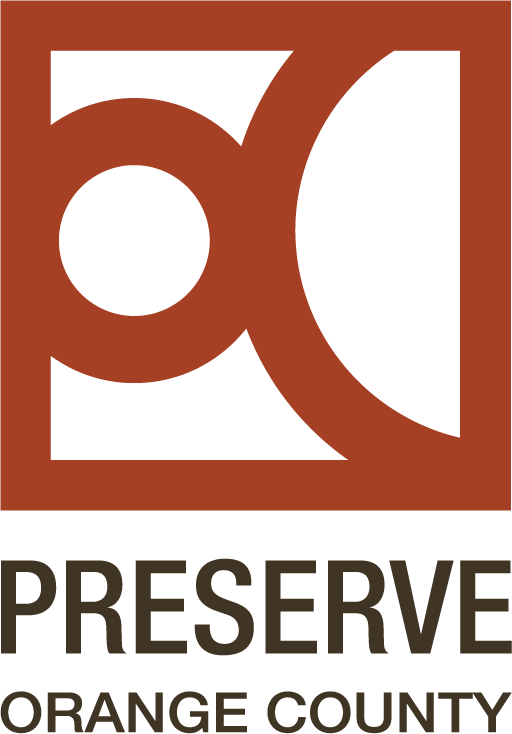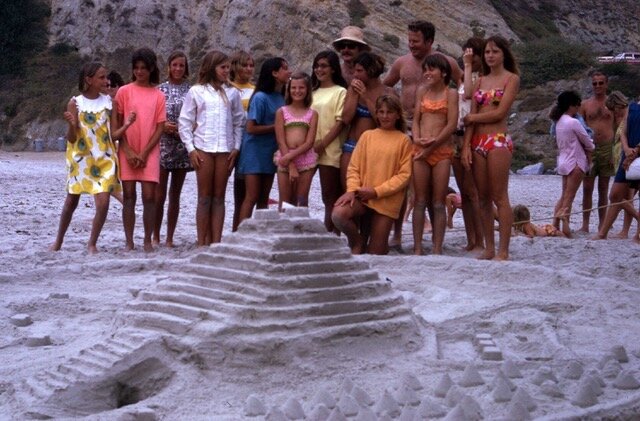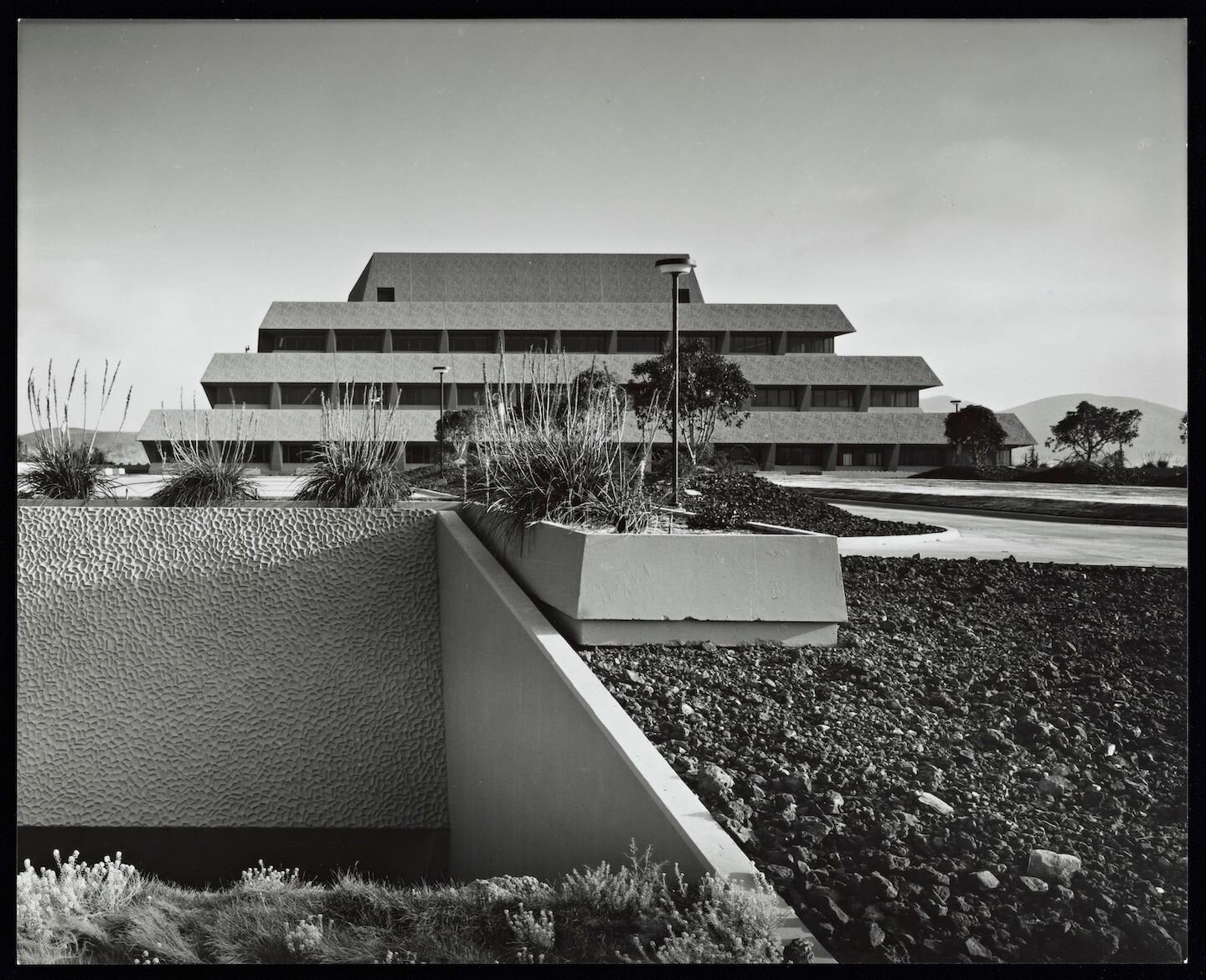Sale Planned of 1971 Pereira-Designed Icon of High Tech
By Alan Hess
The great ziggurat that rises above Laguna Niguel's Aliso Creek valley has been an unmistakable landmark since opening in 1971 as North American Rockwell’s Autonetics headquarters. Now known as the Chet Holifield Federal Building (after the area’s former congressman), it was designed by architect and planner William Pereira.
The building has always captured the imagination. Laguna Niguel Girl Scouts and their ziggurat sand castle. Date unknown. Collection of Teosson Wells.
Because it opened just as a major contract fell through, Rockwell found it did not need the 1 million square feet building and traded it in 1974 to the General Services Administration. The Federal Government has used it to house several agencies, including the Immigration Services Agency, the Internal Revenue Service, and the National Archives Annex. It has also been featured in several movies, including Coma (1978), Deal of the Century (1983), and Outbreak (1995).
Now the GSA is seeking to sell the 92-acre property. Preserve Orange County is working with the National Trust for Historic Preservation to advocate for its preservation and adaptive reuse. Because it is federally-owned, the Holifield building is subject to a Section 106 review of the National Historic Preservation Act of 1966.
North American Rockwell Corporation. Photograph by Julius Shulman (1971). Shulman was hired for this series of photographs by the ad and PR firm, Liller, Neal, Battle & Lindsey and by American Saint Gobain, an international building materials manufacturer. © J. Paul Getty Trust. Getty Research Institute, Los Angeles (2004.R.10)
Not only is the Holifield Building a rare surviving landmark of the space exploration and defense industries that fueled Southern California’s growth through most of the twentieth century, it is an excellent candidate for an adaptive reuse solution. Though the building is enormous, it is surrounded by 58 acres of surface parking lot, leaving room for other development. Recycling existing buildings, rather than demolishing them, saves valuable energy and supports sustainability.
The massive parking lot surrounding the building is still there today. Photograph by Julius Shulman (1971). © J. Paul Getty Trust. Getty Research Institute, Los Angeles (2004.R.10)
After World War II Southern California’s economy thrived on the aerospace industry, with campuses and facilities from Simi Valley to San Diego for Nortronic, TRW, Hughes, Aerospace Corporation, North American Aviation, General Atomic, General Dynamics, and others. Orange County boasted its share: besides Rockwell, Pereira also designed campuses for Ford Aeronutronic Systems (1958) in Newport Beach, and Astropower (1962) in Irvine, both since demolished.
Note the texture of the precast material in the foreground. The building has the same texture. Photograph by Julius Shulman (1971). © J. Paul Getty Trust. Getty Research Institute, Los Angeles (2004.R.10)
According to historian Stuart Leslie of Johns Hopkins University, the architecture of these campuses captured the forward-looking, Modern atmosphere of the Golden State notably different from the staid, bureaucratic look of most similar facilities back east. For example, the lobby of Pereira’s Convair headquarters in San Diego featured a show-stopping corkscrew ramp suspended with thin metal rods; the unusual and prominent ziggurat form of the Rockwell building suited the industry and the state’s sense of its role in forging the future. Like other aerospace campuses, the building was located near highly desirable new communities, including the master-planned towns of Laguna Niguel and Mission Viejo, and the seaside towns of Laguna and Dana Point.
The North American Rockwell Corporation Building in 1971, now the Chet Holifield Federal Building. Photograph by Julius Shulman. © J. Paul Getty Trust. Getty Research Institute, Los Angeles (2004.R.10)
The Holifield Building includes an original Pereira-designed lobby; Pereira’s skill as a planner allowed workers to walk anywhere in the building within five minutes. The building is Late Modern, not Brutalist, in style. Though it has a concrete structural frame, it is sheathed in precast concrete panels (like another landmark Pereira building, San Francisco’s Transamerica Pyramid) formed with an an interesting textured finish that captures light and shadow. In comparison, Pereira’s Geisel Library (an inverted pyramid) at UC San Diego is a true Brutalist design because its muscular poured-in-place concrete structure is expressed on its exterior.
Chet Holifield Federal Building (1971)
24000 Avila Road, Laguna Niguel
William L. Pereira Assoc., architects





